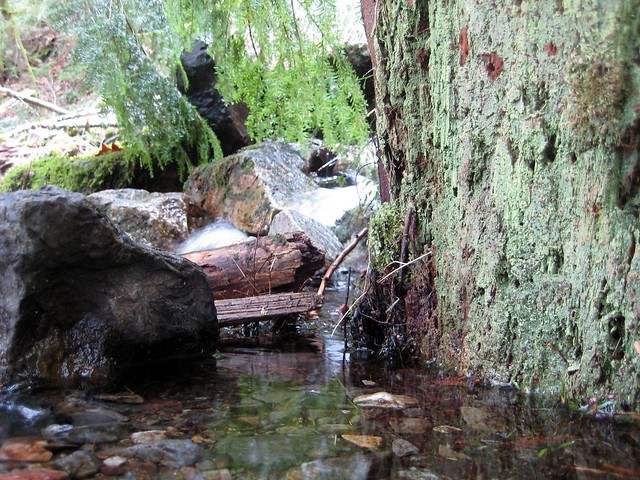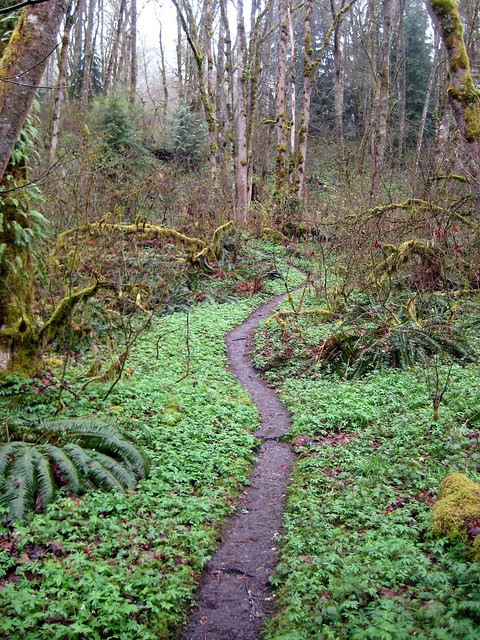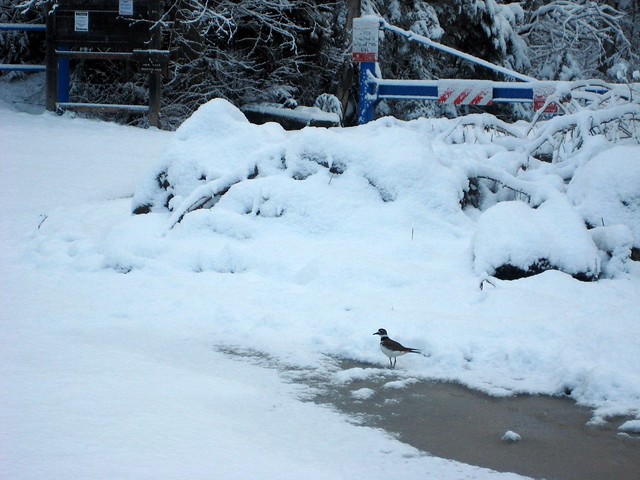Today hikingwithmybrother.com hit the 6 month mark. Since October 26th 2008, we've reviewed 22 hikes spanning 163 miles and climbing up about 42,000 feet in elevation. Now, everyone has their own unique taste when it come to hiking - what works for some is just not appealing for others. For this reason, we work to gather as much information about a hike as we can, so that our posts can be useful to everyone. Nonetheless, every few months, we like to take a look back at which hikes we really enjoyed and highlight what made them our favorites.
We’ve covered a dozen hikes over the last few months, most of them in the snow. The weather often nudged us toward trekking closer to home and the comforts of civilization. We spent almost half our hikes in the Issaquah Alps;
Poo Poo Point,
East Tiger, and
15 Mile Creek were all on Tiger Mountain with
Taylor Mountain Forest and
Phil’s Creek right nearby. The
CCC Trail was not only close to home, but really felt more like an active logging road than a hiking trail. Jer and I both prefer to get a little further out into the wilderness, so these were all out of the running for us.
Olallie State Park,
Stegosaurus Butte, and
Franklin Falls were all very short and lacked the trail distance we generally associate with a great hike. We both agreed that
Melakwa Lake had some potential, but our experience on the trail was so soured by the weather and trail conditions that day, we couldn't bring ourselves to call it a favorite.
This left us, once again, unable to agree on which hike was the best:
Pratt Lake Saddle and
Granite Lakes.

Nathan's Pick - Pratt Lake Saddle
Admittedly, one of the reasons I really enjoyed this hike was the circumstance of the day: a beautiful sunny morning, fresh powder for snowshoeing, and an engaging trail. Although the trailhead is popular, the majority of hikers are heading up to enjoy the long views Granite Mountain provides – most steer away from a trip out to Pratt Lake. The variety of routes that you can take to the Saddle is also a bonus for me; the option to go down to Talpus and Olallie Lakes and make this a through hike is a nice alternative to the typical out-and-back experience. The trail itself is engaging but not too strenuous, winding through mature forests, over streams and past the occasional waterfall before opening up for a great view of Mt. Rainier rising over Olallie Lake.
Granite Lakes was a decent hike, and I thoroughly enjoyed it. However, the trail is yet again on a logging road, another tour through recovering clear cuts, and the diminutive lakes themselves were more of a good stopping point than a meaningful destination. While the route does offer the occasional glimpse of a few local mountaintops, hikers are largely confined to looking at the back of
Mailbox and Dirty Harry’s Peak. Perhaps if we had pressed on to Thompson Lake or had planned to tackle Mt. Defiance this trail would have felt more like a hike and less like a survey of a Weyerhaeuser timber project. As it stands, the Pratt Lake Saddle experience really outshines Granite Lakes, and is very much worth the trip, even if you need to share it with a few fellow hikers.

Jer's Pick - Granite Lakes
I’ve chosen Granite Lakes as my favorite hike over the last 3 months because none of the other hikes rivaled its combination of solitude and scenery. Silently tucked beneath
Dirty Harry’s Peak, this often ignored pair of quaint lakes provides a quiet retreat in close proximity to civilization. Normally, I would agree with Nathan that trekking on logging roads can be a bit dreary, but these roads have been decommissioned for quite sometime, and nature is already starting to reclaim them. In the winter, I don’t think there is a better place to snowshoe. The trail is extremely easy to follow in the snow, is accessible year round, and is free of avalanche danger.
Pratt Lake Saddle is a decent hike, but sadly you spend the majority of the hike shut in by the forest up to the point where you reach the Saddle. This gives the hike a gloomy feel even on the sunniest of days. Also, if you’re looking to be alone, Pratt Lake is not the hike for you. Close and easy access to the Alpine Lakes Wilderness make this trail extremely popular in the summer. So forget the crowds, and instead enjoy a moderate grade hike through recovering clear-cut and 2nd growth forest that’s filled with views of mountaintops such as Bessemer and
Teneriffe.
 With the snow starting to recede from some of the lower mountaintops, we’re already mapping out which peaks and scrambles we want to tackle first. At the top of our list was Mt. Teneriffe, one of a few lesser-known peaks we had been eyeing since last fall. One of the reasons we’ve waited so long on Teneriffe is that the traditional 14-mile route outlined by Manning and other local guide books keeps largely to a decommissioned logging road. Digging a little deeper, however, we found mention of a more direct route to the summit – and it even had an appealing sounding name: the “Kamikaze Trail.” We were sold.
With the snow starting to recede from some of the lower mountaintops, we’re already mapping out which peaks and scrambles we want to tackle first. At the top of our list was Mt. Teneriffe, one of a few lesser-known peaks we had been eyeing since last fall. One of the reasons we’ve waited so long on Teneriffe is that the traditional 14-mile route outlined by Manning and other local guide books keeps largely to a decommissioned logging road. Digging a little deeper, however, we found mention of a more direct route to the summit – and it even had an appealing sounding name: the “Kamikaze Trail.” We were sold. 



